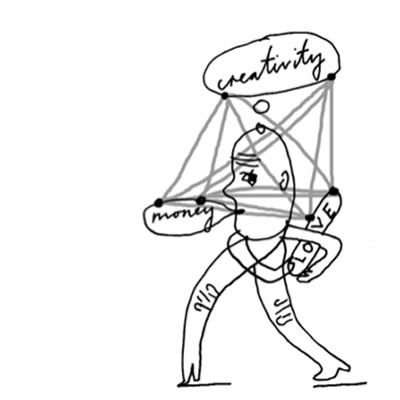First published on November 2011.
Museum worksheets have a lot to answer for. ‘Can you spot the cat on the far wall? How many places are set at the table?’ When I was a child worksheets in museums were relatively new, a valiant effort to reach out to younger visitors. Trouble is, they turned visits into school-like, formal experiences - art and historic collections viewed through filters of form-filling. Those worksheets became synonymous with museum education for many now holding purse-strings and making policy.
Museums, galleries, heritage sites, archives, historic houses, science centres, archaeological sites and their ilk (hereafter collectively referred to as museums) all offer so much more than worksheets. They’re places where the extraordinary jostles for space with the everyday - our local community’s everyday or that of distant peoples and past times. They hold evidence of craftsmanship, ingenuity, creativity and imagination, alongside that of cruelty, horror and inhumanity. Just as valuable are their people - curators, academics, scientists, artists, makers, researchers, educators, re-enactors and storytellers.
There’s no arguing with the impact upon learners of high-quality, meaningful engagement with cultural collections and knowledgeable, creative people. The research is done, we know it works. Children and young people benefit from leaving the classroom and learning in different settings. We all learn best from a range of people, working in different ways with interesting stimuli. Key skills are honed and developed, teachers are supported and inspired, imaginations and ideas are sparked.
So why is our world-class museums sector sidelined when it comes to formal education? Why are educational strategists not placing its collections, stories and expertise at the heart of the educational experience? Why, when technology makes collaboration and exploration beyond classroom walls easier than ever before is that not happening as a matter of course? How, even if 'artsy' arguments are set aside, has the financial imperative to maximise the value of public investment in culture not yet come into play?
We've done the difficult bit. Countless artworks, natural specimens, artefacts, films, sounds, documents, books, buildings and more are safely conserved and in public ownership. Millions of objects are digitised and available online (if you only knew where to look). Collections aside, within the museums sector a wealth of careers are represented, either within institutions or amongst related sectors enabling their work. Academic disciplines, marketing, making, writing, teaching, building, designing, administration, finance, digital & technical skills, customer services, catering... the list goes on. There is no other public service as perfectly suited to be an integral part of young peoples’ educational experience.
We need to embed cultural learning deep into curriculum delivery and across the whole school experience. We need cost-effective, scalable models that empower teachers and value learners as content creators. We need to:
- Appoint cultural learning staff - shared between venues and schools, to enable collaboration in local, subject-themed clusters
- exploit the local - not all schools have national museums on their doorstep but all collections have potential if interpreted with insight and imagination
- wire museums up (wifi, hardware, software & skills) - digital technologies enable learner engagement with collections and expertise regardless of location
- articulate skills, experience and knowledge gained through cultural learning within formal educational assessment structures
- support and respect museum learning teams - invest in training and career pathways
- help parents understand the value of cultural learning
- mix it up - blur schools and museum boundaries to enable cross-curricular, multi-site learning
- ensure public cultural venues have practical education spaces with capacity analogous to the scale of their collection and the community of learners they serve
- explore new business models enabling public cultural venues to compete with commercial educational content suppliers.
Exemplars of successful cultural learning projects encompassing paintings, archival documents, citizen science and film include Take One Picture , Campaign! Make an Impact , eBird and Film Club . Langley Academy in Slough is setting out to incorporate museum learning across its offer with on site collection exhibits, dedicated museums education staff and a target of 12 annual museum visits per student. This new school is a heartening move towards the cultural learning ideal - we should follow progress with interest.
I wouldn't want or expect every child to end up as a museum curator or an artist, that's not the point. I do believe schools and the cultural sector should share responsibility for education with museums playing key roles. Does this approach undermine the art for art's sake ideal? No. It's not about ‘downgrading’ the nation's museums into a schools support services. It's not about squeezing joy and wonder from encounters with culture. It's definitely not about worksheets.
By providing inspiration and opening up opportunities to children and young people around arts and heritage, we will raise levels of educational attainment, strengthen our cultural institutions and enrich lives.
 Creativity Money Love: Learning for the 21st Century by Creative & Cultural Skills is licensed under a Creative Commons Attribution-NonCommercial-NoDerivs 3.0 Unported License.
Creativity Money Love: Learning for the 21st Century by Creative & Cultural Skills is licensed under a Creative Commons Attribution-NonCommercial-NoDerivs 3.0 Unported License.
Illustrations by Paul Davis - http://copyrightdavis.blogspot.com/


